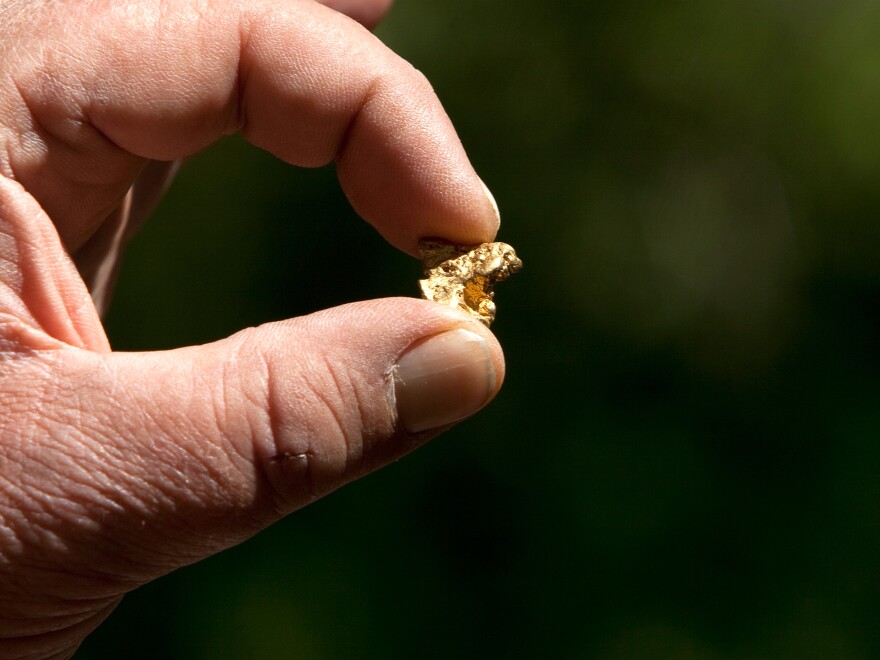Wayne Warren shakes wet dirt out of a plastic bucket and into a metal chute, tossing aside bigger rocks. For him, California's drought is golden.
Yes, golden. Warren is knee-deep in the San Gabriel River, an hour outside of Los Angeles. That chute next to him is a sluice box. The water washes away the dirt in a muddy cloud, and he leans over the box. Out of the creek, he taps his findings into a green, plastic gold pan and gives it a few swirls. What's left ...

"Sure is pretty in the sun, huh?" he says.
Consider this the golden lining of California's historic drought. The Golden State is getting some much needed rain this weekend. In many parts of the state, it's the first rain of the year. The drought is bad for most people, but for others, it's an opportunity. Curt Timmons, another gold prospector and the owner of the shop Little Digger Mining and Supply in nearby Baldwin Hills, has been walking the riverbanks of the San Gabriel his whole life.
"Yeah, it's good for the gold prospectors. They love it because they can get down to that bedrock without using any scuba equipment," he says. "Normally it'd be about 6 feet over your head. And now it's so low, it'd probably be up to your knees in depth, if that."
Little rain and even less snowpack have made the San Gabriel River more of a stream. It's not just here, says Kevin Hoagland, executive director of development at the Gold Prospectors Association of America.
"It's beyond just the state of California," he says. "Where I'm at in Arizona, we haven't even had our first snow yet."
Hoagland, who lives in Prescott, Ariz., says that's opened up riverbeds there too.
"It's given people an opportunity to literally just go in with a gold pan and a shovel, and be able to get in some of these cracks and crevices and find gold that you wouldn't normally be able to recover."
Hoagland says it's not 1849 again: no need to pack the wagon and head West. But it is exciting for most people, though not for Maury Roos, the chief hydrologist at California's Department of Water Resources.
"It's a bad thing for those who need water, and I imagine it's not the best thing either for the fish that live in the rivers," he says.
Roos says it's good that some people are benefiting, but overall, this drought is bad. Many of California's rivers are at or near record low water volumes. Even with rain, their outlook isn't good. Roos says that will affect fisheries, already endangered salmon, watersheds, and even trees and vegetation.
That's not to mention the people — the cities that are under mandatory water restrictions, or the farmers who let their land go fallow, or unplanted.
For a clearer picture, just go back to where our guys were looking for gold, on the San Gabriel River. Follow it south, to where it pools behind San Gabriel Dam and you'll see high water lines some hundred feet above the reservoir's surface. The three major dams in this canyon hold nearly 40,000 Olympic-size swimming pools' worth of water. According to the Los Angeles County Department of Public Works, less than 1 percent is available for release. Otherwise the dams would go below their minimum levels.
That doesn't have quite the same golden glimmer.
Copyright 2022 NPR. To see more, visit https://www.npr.org.




